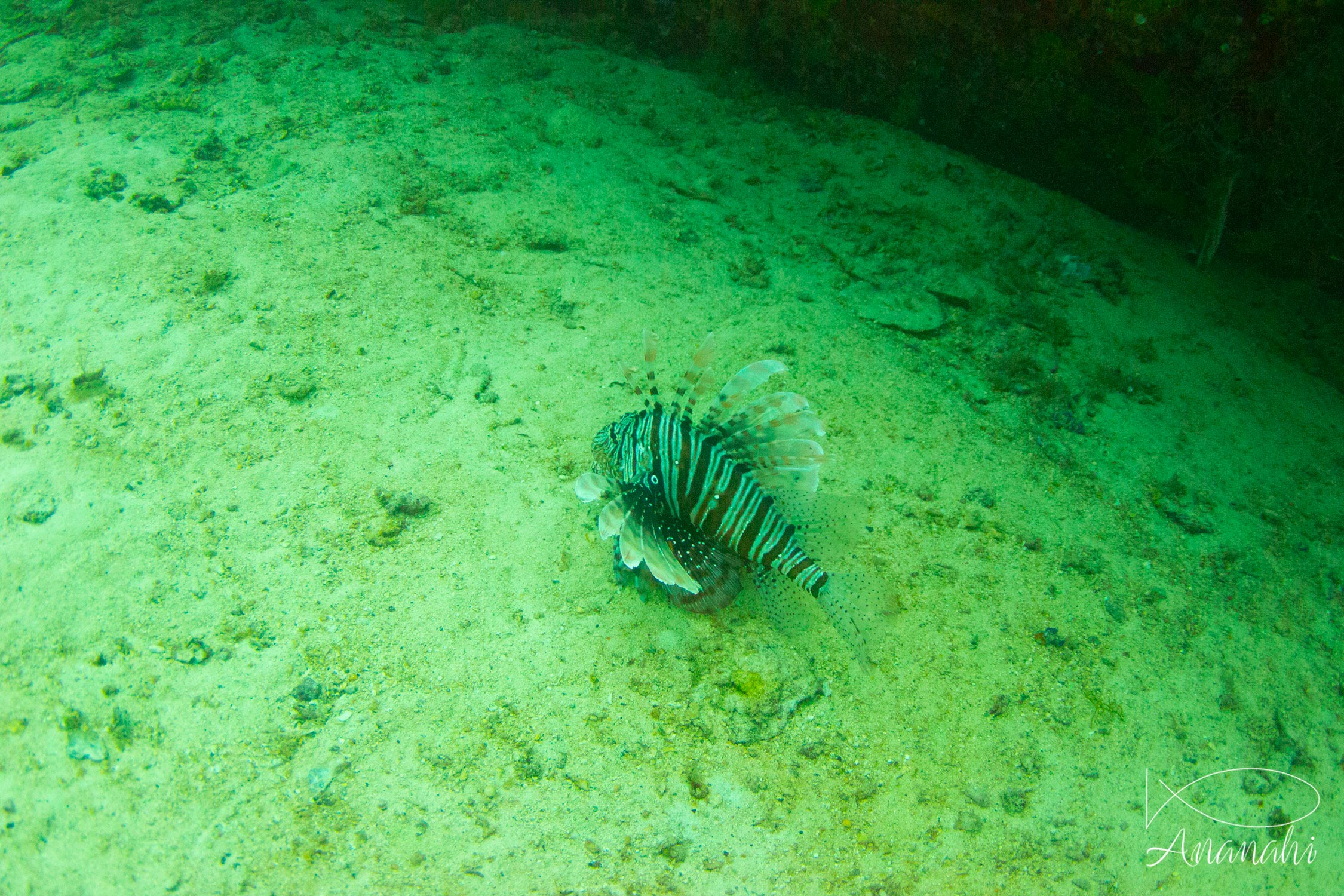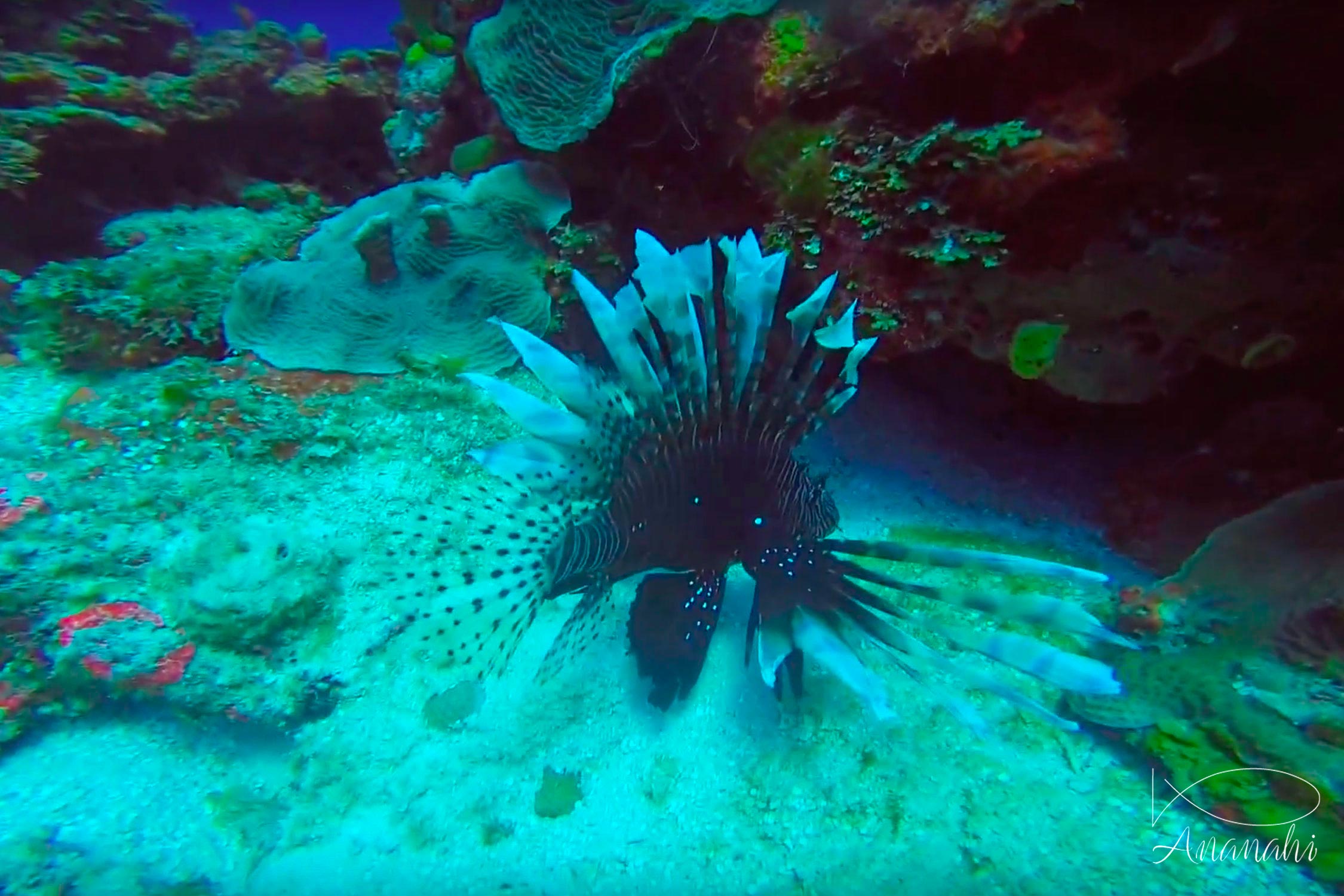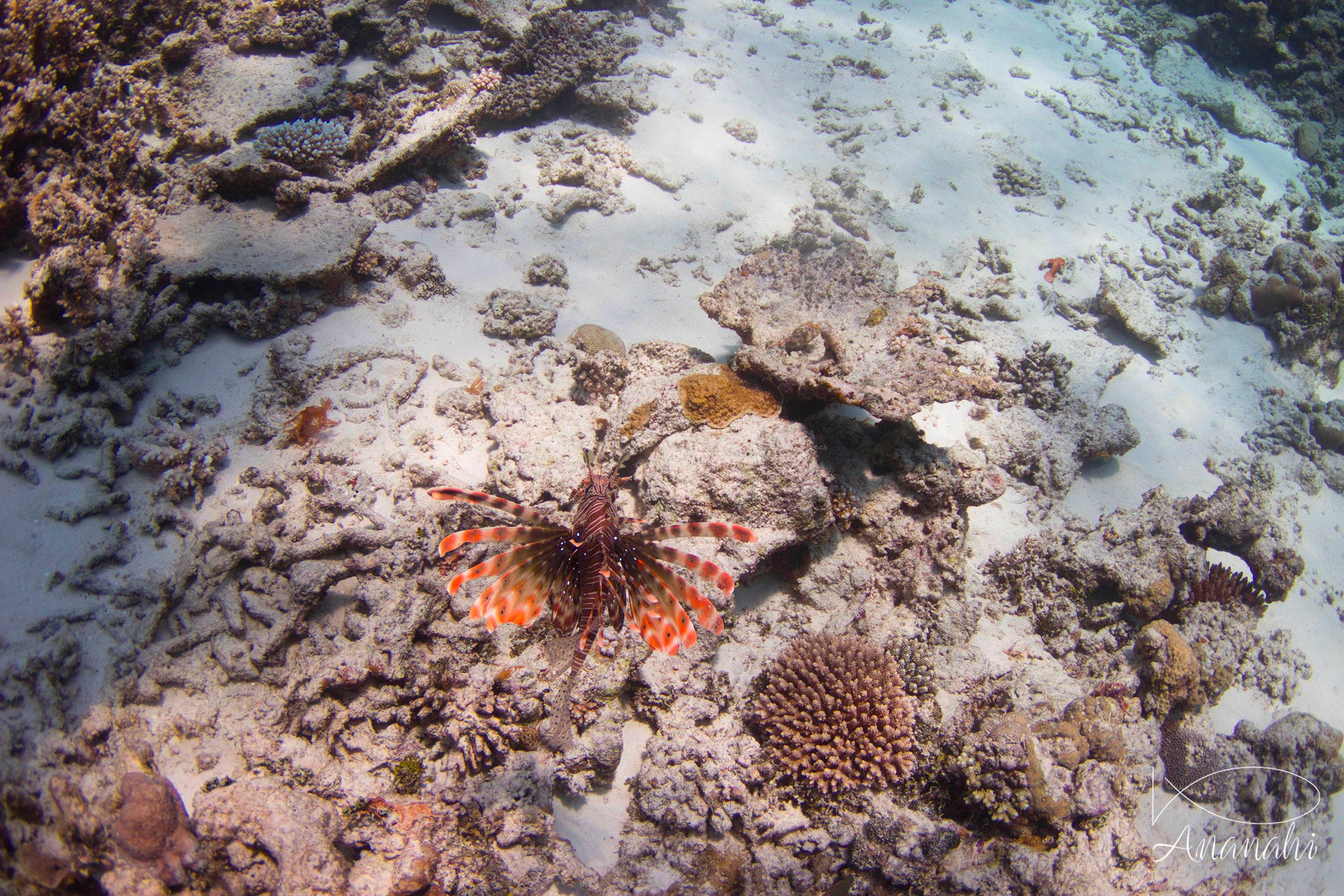
Scientific name: Pterois volitans / Pterois miles
Size: Up to 15 inches
Color: Red to dark brown and white
Distinguishing feature: Massive body with white and brown vertical stripes. Thorns of the dorsal and long pectoralales have a veil over the entire length.
Where did we see it: Zanzibar, French polynesia, Mayotte, Maldives

Scientific name: Pterois volitans / Pterois miles
Size: Up to 15 inches
Color: Red to dark brown and white
Distinguishing feature: Massive body with white and brown vertical stripes. Thorns of the dorsal and long pectoralales have a veil over the entire length.
Where did we see it: Zanzibar, French polynesia, Mayotte, Maldives
Juvenile has a very dark color drawing towards the black and very long pectoral spines.
The Pacific and Indian Ocean species can't be distinguished with the eye only.
Venom glands are integrated into the spines of scorpion fish. This venom causes severe pain and can be fatal. That's why this species does not really have any predators (except trumpetfish and moray eels).
This species was introduced to the Caribbean in 1992 following the destruction of an aquarium by Hurricane Andrew. The first observations were made in 1994 and its extension has been very important since then.





We can hear the bull shark is very dangerous because of attacks near La Réunion island.
However, tens of them are living at 600 feet from the famous beach of Playa Del Carmen in Mexico. And there are no attacks.
The tiger shark has slender marks similars to the lines of tigers, hence its name.
When it is juvenile, these marks are round and not vertical. They change when it grows.
The kakihona sushi (sushi wrapped in persimmon leaves) are really the best!
To eat them, you have to go to Nara!